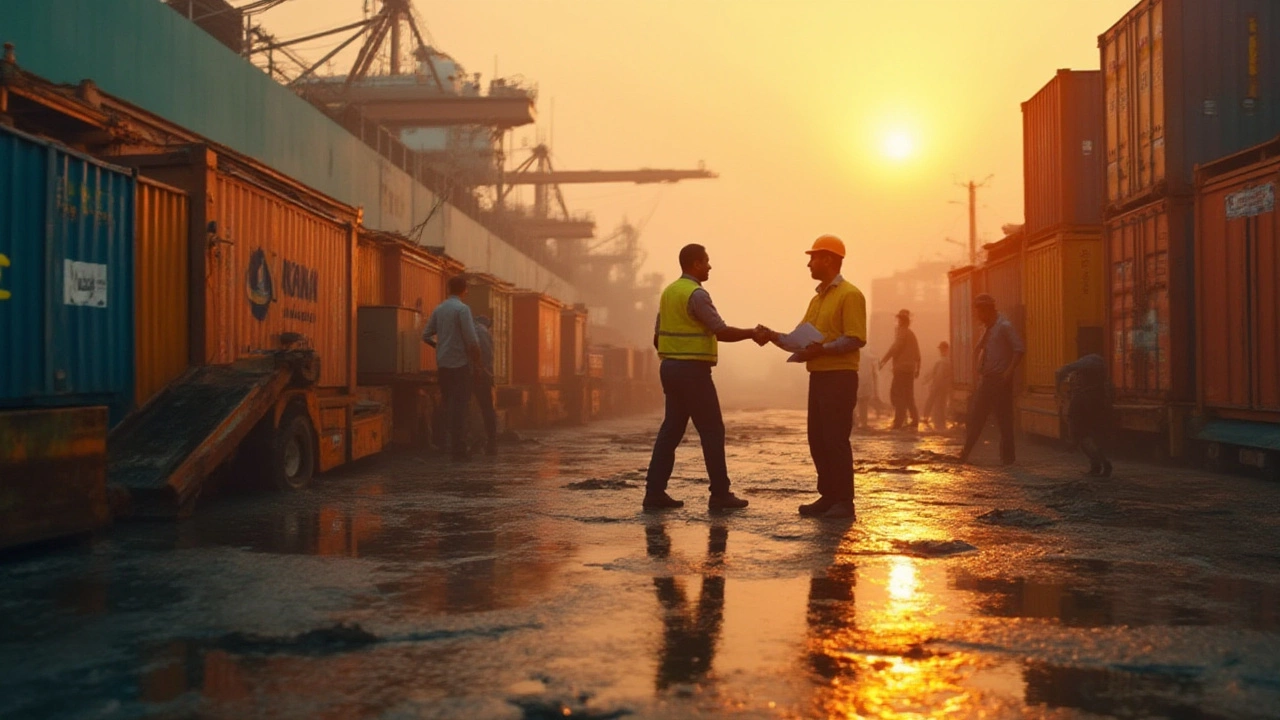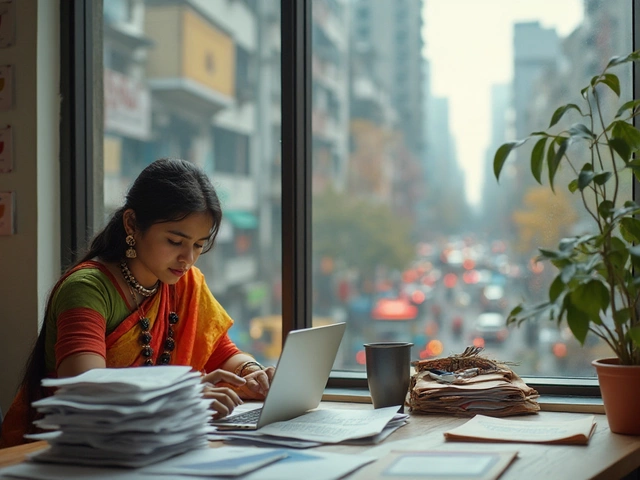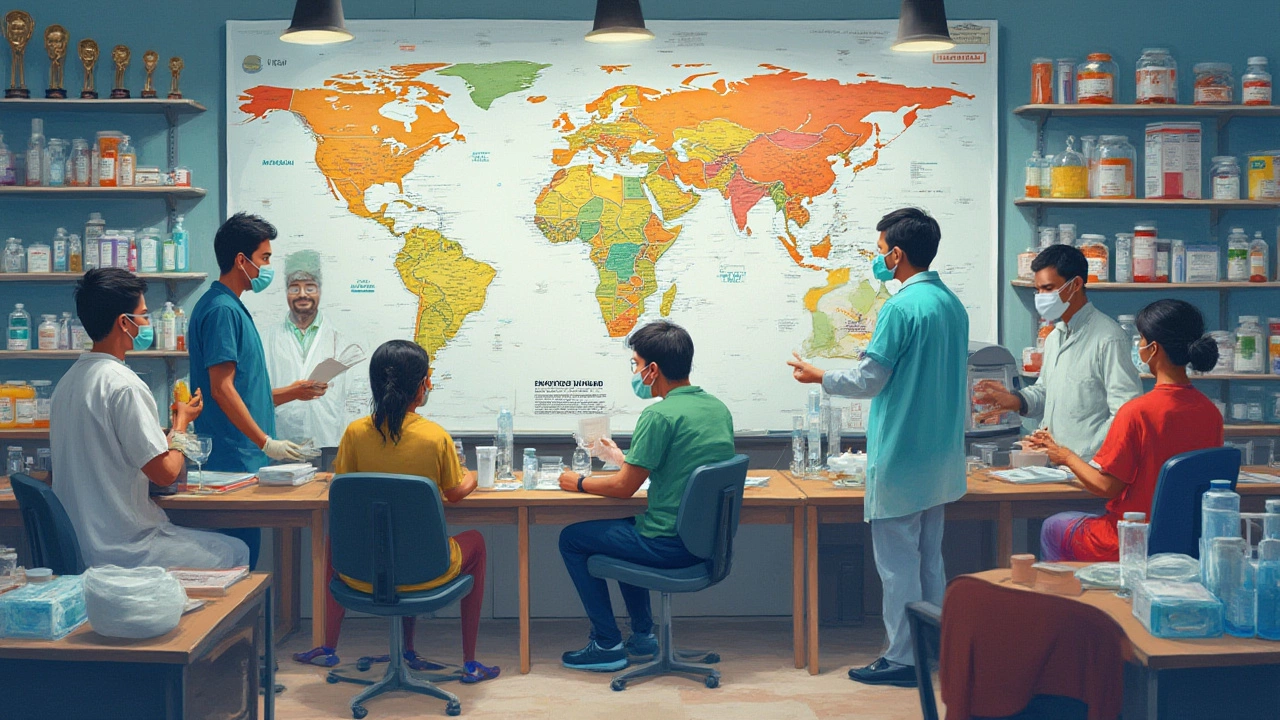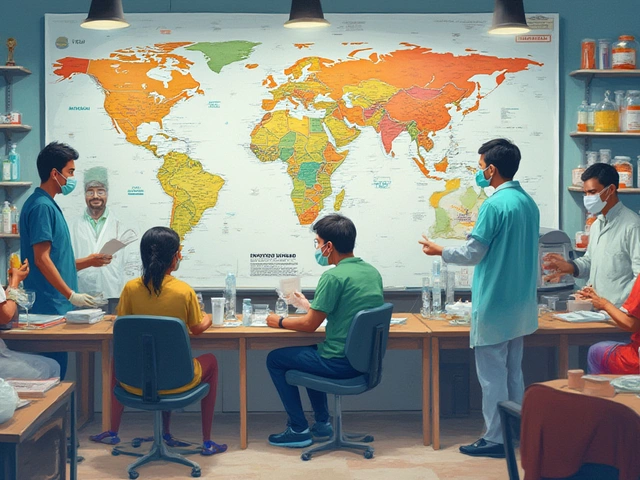Type “Which country supplies the world with the most medicines?” into any search engine, and you’ll find India up there every time. Everyone knows about Silicon Valley, and some have heard of Shenzhen—so what about the place people call the “Pharmacy of the World”? India isn’t just a rising star: it’s a core pillar for global healthcare, and there’s a good reason why even the wealthiest countries stock their clinics and hospitals with Indian medicines.
How India Climbed the Pharma Ladder
Back in the 1960s, if you wanted world-class medicines, you would not have looked at India. The country mostly imported expensive drugs or relied on unaffordable patents. But the Patents Act of 1970 changed that story. It let Indians manufacture generic versions of branded drugs. Suddenly, Indian pharma companies didn’t just copy—they innovated, scaled up, and grabbed the market with both hands.
By the 1990s, giants like Cipla and Dr. Reddy’s made headlines with lifesaving HIV drugs costing a fraction of Western prices. This aggressive approach made medicines affordable not just for Indians, but for millions abroad who saw prices slashed overnight. Right through the 2000s and into the pandemic era, Indian scientists kept shifting gears: inventing processes, ramping up bulk manufacturing, and finding ways to cut waste and costs without cutting quality.
Combined with a huge, skilled workforce and lower operational costs, India leapfrogged several countries. Cheap labor helps, sure, but so does hustle, and an endless hunger to become the world’s hub for generic pharmaceuticals.
If you’re wondering how big this has become—by 2025, India covers around 60% of the global vaccine demand, and over 20% of global generic drugs by volume. That’s how the country’s pharma sector turned from a quiet backoffice to the front page of global healthcare.
Breaking Down the Global Pharma Rankings
So, where exactly does Indian pharma stand in the global pecking order? If you’re talking in terms of sheer volume, India is the world’s third largest producer of pharmaceuticals. Let that sink in: only the US and China outdo India in total manufacturing output—no one else comes close. But when you focus on exports by volume, India moves up a notch and wears the crown as the largest supplier of generic medicines worldwide. Over 200 countries depend on Indian medicines, and more than 50% of Africa’s pharma imports come directly from Indian factories.
However, when you look at sales value, the story gets a twist. Western pharma companies—thanks to their focus on high-value original drugs and cutting-edge biotech—take a bigger share when totals are counted in dollars. In value, the top five pharma countries are the US, China, Germany, Switzerland, and Japan. India stands at number ten. Still, if the contest is about volume and access—not just cash—India is neck and neck with the world’s best.
You might ask: Are there numbers to back all this up? Check the table below for a snapshot from the latest available figures:
| Rank (Volume) | Country | Annual Pharma Production Volume (billion units) | Global Market Share by Volume (%) |
|---|---|---|---|
| 1 | China | 95+ | 22 |
| 2 | USA | 75+ | 20 |
| 3 | India | 60+ | 18 |
| 4 | Germany | 40+ | 10 |
| 5 | Switzerland | 24+ | 6 |
Source: WHO Pharmaceutical Production and Export Survey 2024
Play with the stats as you like, but India’s seat at the table is secure. And there are some nuggets that might surprise even the most curious business nerds. For example, nearly 40% of all generic drugs sold in the USA are made in India. The World Health Organization sources a whopping 70% of its supply for essential medicines from Indian companies. Try buying a paracetamol tablet in London, Rio, Nairobi or Toronto; the odds are high that it comes from an Indian factory.
Stay alert, though: the Indian pharma sector isn’t just big—it’s constantly evolving to fill up the world’s medicine cabinets at scale and speed.

Why India Rules in Generic Medicines
There’s no secret sauce here: it’s about speed, price, and scale. India’s real game isn’t patented medicines (though that’s changing fast). It’s the massive, non-stop output of generic drugs—affordable versions of medicines whose patents have expired, but which are just as safe and effective as the originals. That’s where the country wields real power.
The ecosystem is wild. More than 3,000 drug companies; 10,500 manufacturing units licensed by Indian authorities; thousands of research chemists and quality control experts, and constant investment into new equipment and automation. Add smooth government approvals for generic production and a culture of reverse-engineering, and you’ve got a perfect storm for low-cost, high-volume production.
Here’s what sets India apart:
- Extremely low production costs due to cheap labor, but also massive operational efficiency.
- A government that actively supports pharma exports, fast-tracks clearances, and offers tax perks for R&D.
- Fast adoption of automation and digital tools. Most new Indian factories now run with AI-driven quality control and integrated supply chains.
- Huge supply of STEM grads—India produces around 1.5 million engineers every year. Many leap into pharma or biotech without hesitation.
- Flexible, creative regulatory compliance teams who know both Indian and international rules inside-out. India now has the second largest number of FDA-approved plants outside the US itself.
Another part of the story that often gets missed: Indian pharma isn’t just focused on everyday pills or syrups. The country is now one of the top suppliers of complex bio-similars (generic versions of biotech drugs), anti-cancer molecules, and even advanced drug delivery systems like long-acting injectables.
Step into any major global city, and somewhere in the hospital system you’ll spot Indian-made cancer drugs, cardiology medicines, vaccines, or antibiotics. That’s not just luck—that’s years of regulatory grit, supply chain upgrades, and a constant push to outdo global rivals.
Challenges and Controversies: The Other Side of Success
If you think being the “Pharmacy of the World” is all glory, better think twice. Indian pharma has had its share of headaches. Safety scandals, random FDA warnings, reports of poor-quality batches—these have hit the headlines, and not just once or twice. In the US, the FDA has sometimes blocked shipments from Indian plants for breaking quality rules. That’s partly because demand is huge and factories are always running at capacity—mistakes slip through.
Sometimes, pressure to keep costs down can tempt even respected companies to cut corners. But that usually backfires. Big names like Sun Pharma, Ranbaxy, or Wockhardt have spent millions fixing quality lapses and putting robust inspection systems in place. The government is now a lot stricter too. Over the past five years, nearly 300 drug facilities have been shut or fined for failing to meet global manufacturing standards.
Beyond safety, there’s the intellectual property drama. Western companies often complain that Indian law is too lenient on drug patents—it’s too easy to make generics, they argue. But for India, bold patent rules have meant lifesaving drugs that are affordable for the poor, not just the rich. The economic and ethical arguments both get heated, especially during health crises (like during the COVID-19 pandemic). Still, Indian pharma’s focus on generics hasn’t stopped innovation. In the past decade, Indian companies have filed thousands of international patents for new processes, delivery technologies, and even unique drug formulas.
Let’s not forget the human element. Indian pharma employs over 3 million people directly (and millions more through supporting sectors). Whole cities—like Hyderabad, Ahmedabad, and Goa—have turned into pharma clusters. When the sector booms, families and local economies feel it first. But any major scandal pulls the rug out from under thousands of households, showing just how high the stakes are when you’re this big.

Looking Ahead: Tips and Trends for Entrepreneurs
Interested in jumping into India’s pharma scene yourself? There’s a lot to think about, because the industry is changing as fast as any out there. Here’s what’s shaking up the landscape:
- Regulation and Quality First: With increasing inspections from international agencies (like FDA, EMA), new players must invest early in compliance and digital quality control. Skimping on quality might mean shutdowns, not just warnings.
- Innovation over Imitation: While generics still rule, the big money (and long-term growth) is now in biopharmaceuticals and innovative new drug delivery systems. Indian firms like Biocon and Zydus are already making waves here.
- Global Supply Chain Partnerships: Post-pandemic, buyers demand more traceability, safety data, and parametric release systems. Team up with logistics and packaging experts who know the ropes.
- Sustainability and Green Chemistry: Eco-friendly production and waste recycling aren’t trends—they’re expectations. Young companies that invest in green chemistry tech gain favor with Western buyers and avoid regulatory heat.
- Digital Health Integration: Software isn’t just for accounting—look at predictive analytics, real-time batch monitoring, and AI-powered R&D. Small companies with digital smarts can leapfrog bigger rivals who are slow to change.
Here’s a pro tip: start networking early. Major Indian pharma exporters are plugged into chambers of commerce, international trade fairs, and government forums. Industry bodies like the Indian Pharmaceutical Alliance mentor newcomers. Take advantage—mentorship here often comes free, along with access to shared labs and even early financing opportunities. Consider setting up in a “pharma city” where costs and resources are shared across dozens of companies.
Also, watch out for country-specific rules—like the way the US markets require special certifications, or how Africa and South America often welcome direct deals with local governments. Having multilingual talent and cross-border compliance experts gives any small startup a serious edge.
Most importantly, don’t get starry-eyed about quick profits. The sector takes patience. Licensing delays, sudden regulatory changes, and unpredictable global demand shifts all add risk. But for those who come prepared, Indian pharma offers a seat at the world’s top table. And that’s no small feat in 2025.





Write a comment